Discover 7 hidden attractions, cool sights, and unusual things to do in Storrington (United Kingdom). Don't miss out on these must-see attractions: The Abbey, Harrow Hill, and Our Lady of England Catholic Church. Also, be sure to include Amberley Mount to Sullington Hill in your itinerary.
Below, you can find the list of the most amazing places you should visit in Storrington (England).
Table of Contents
The Abbey

St Joseph's Abbey, Storrington at Storrington in Sussex, England, was originally a rectory, later a small country house and then a convent school.
It is an irregular five bay, two and three storey house built in 1871-2 by the Rev George Faithfull in the Victorian Gothic style, reusing material from the 1621 rectory which was demolished at this time. In the 1880s it was the residence of Colonel Walter George Stirling, a Baronet who had a pedigree herd of Jersey cattle. Successive tenants altered the house; in 1911 (semi-timbered work) and 1930 (brick range) when Colonel H.V. Ravenscroft added a billiard room and ballroom designed by John Leopold Denman.
In 1953 the house became a Dominican Convent and boarding school. The school closed in 1999. Inside, the oldest part of the building has the former Dining Room (now Chapel) with good quality 19th century linenfold panelling and frieze, plastered ceiling with strapwork ribs and stained glass windows. The Drawing Room has early 18th century panelling and a fireplace with engaged columns; and the former Library (currently Meeting Room) has a 16th-century stone fireplace. There is an elaborate oak main staircase with turned balusters and a painted well staircase with turned balusters and chamfered square newel posts with ball finials.[1]
Harrow Hill
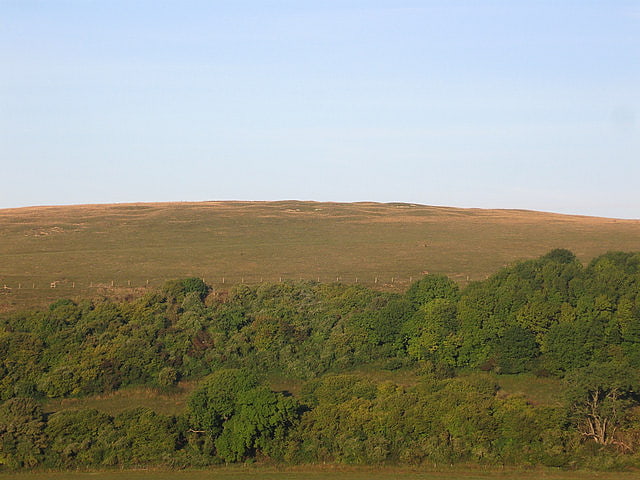
Harrow Hill is an archaeological site in West Sussex, England. It is on the South Downs about 3 miles north of the village of Angmering and 5 miles north-west of Worthing.
There is Neolithic flint mine, and a Martin Down style enclosure of the Bronze Age. The site is a scheduled monument.[2]
Our Lady of England Catholic Church
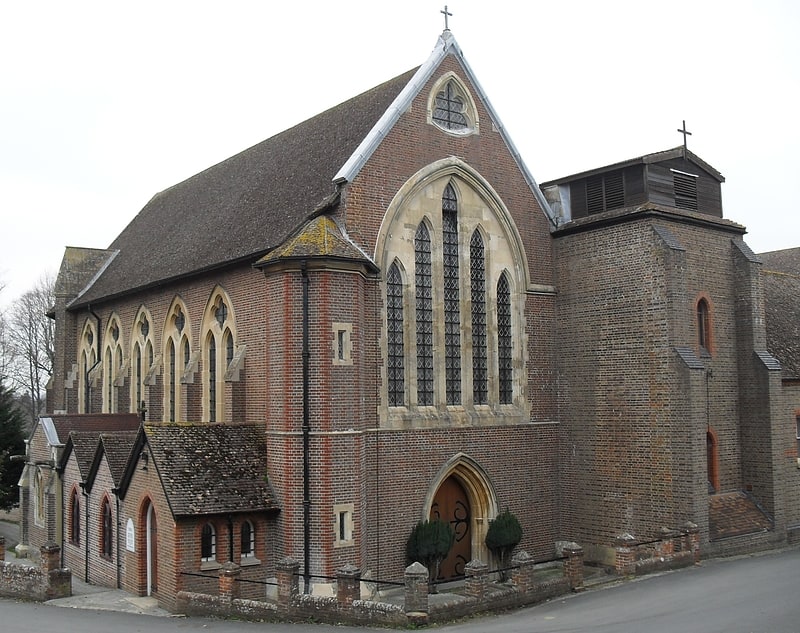
Priory. Our Lady of England Priory in Storrington, West Sussex, England is the former home of Roman Catholic priests belonging to a Community of Canons Regular of Prémontré, after the place where they were founded in France in 1121. The priests are also known as Norbertines after Norbert of Xanten, the Founder of the order. Because of their white habits, another name for members of the Order is White Canons. The priests follow the Rule of St Augustine.
The land the Priory is built on was granted by Henry Fitzalan-Howard, 15th Duke of Norfolk, and the foundation stone of the Priory Church was laid in 1902 by Cardinal Bourne, Archbishop of Southwark. The Church houses the Shrine to Our Lady of England, the shrine statue being the work of the Austrian sculptor Ferdinand Stueflesser.
The poet Francis Thompson stayed at the Priory after being brought there by Wilfrid and Alice Meynell to recover from opium addiction. He wrote the poem To Daisy during his stay. Also, Hilaire Belloc wrote the poem On Courtesy on 17 May 1908 after visiting the Priory.
The first Prior of Storrington Priory was a French White Canon, Father Xavier de Fourvière (born Albert Rieux in 1853 in the Provençal village of Robion (better known today as "Peter Mayle country"). He was one of many French priests exiled from France in the early 1900s – he arrived to settle there in 1903 – following the aggressive acts of separation of Church and State by the French government. Xavier de Fourvière was a renowned writer, poet and charismatic preacher, a member of Frédéric Mistral's famous "Félibrige" movement for the Provençal language. He preached often at the church of Our Lady of France, Leicester Square, London where he was taken ill in May 1912, returned to Provence (hoping the sun would secure his restoration) but he died in October 1912 and is buried in his birthplace, Robion.
The Chemin Neuf Community uses the buildings, still owned by the Church and licensed to the community by the Order who left them after over 130 years in the early 2010s.[3]
Amberley Mount to Sullington Hill
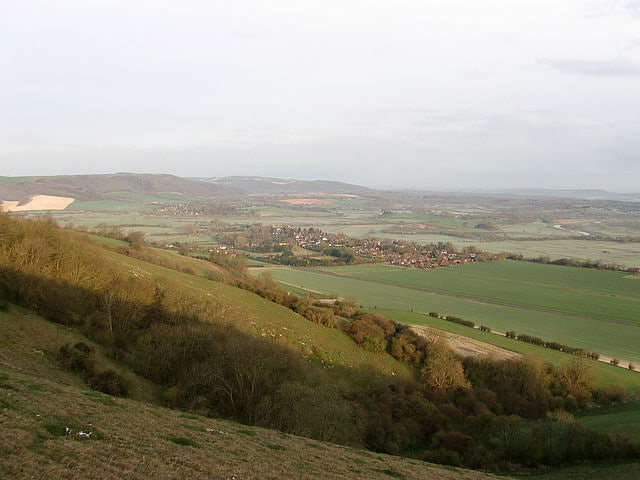
Amberley Mount to Sullington Hill is a 177.2-hectare biological Site of Special Scientific Interest south-west of Storrington in West Sussex.
This site has chalk grassland and scrub on the slope of the South Downs. It has several unusual butterflies, moths and snails, including the light feathered rustic and juniper carpet moths and the rare Adonis blue butterfly.[4]
Sullington Warren

Nature preserve in Storrington, England. Sullington Warren is a 24.7-hectare biological Site of Special Scientific Interest in Storrington in West Sussex. It is owned by the National Trust and it includes several tumuli which are Scheduled Monuments.
Most of this site is dry heath, but there are also areas of wet heath, scrub, bracken, woodland and grassland. Flora on the wet heath includes hare's-tail cottongrass and the insectivorous round-leaved sundew. Woodland birds include all three British species of woodpecker, tree-creepers, long-tailed tits, nuthatches, nightingales and kestrels.
There is access to the site from Water Lane.[5]
Parham Park SSSI
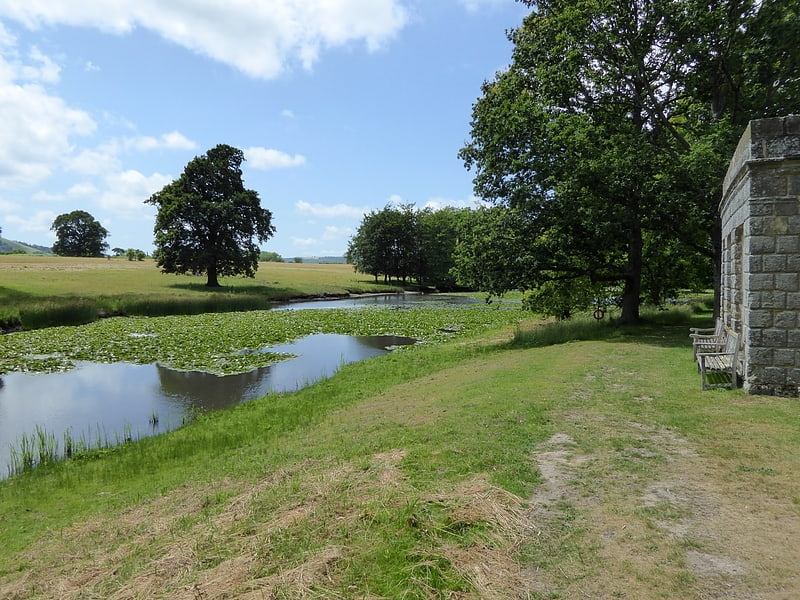
Parham Park SSSI is a 263.3-hectare biological Site of Special Scientific Interest in the grounds of Parham Park, west of Storrington in West Sussex. It is a Nature Conservation Review site, Grade 2.
This medieval deer park has a very rich epiphytic lichen flora, with 165 recorded species. Habitats include woods, parkland, bogs and artificial ponds. The site also has a large heronry and two rare beetles, Ampedus cardinalis and Procraerus tibialis.
The house and grounds are open to the public for a fee.[6]
Chantry Mill
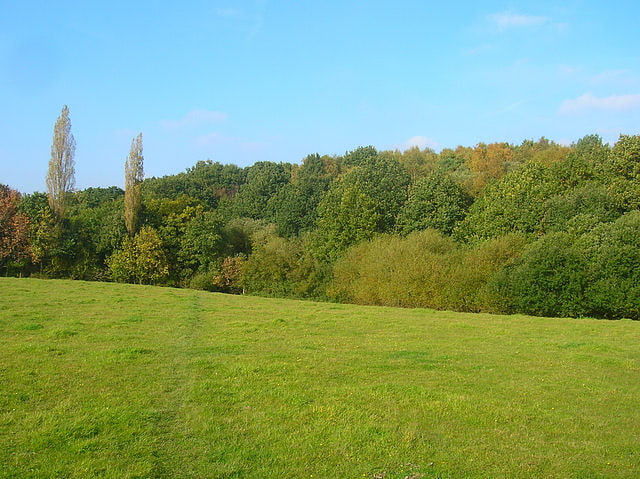
Chantry Mill is a 8.7-hectare geological Site of Special Scientific Interest in Storrington in West Sussex. It is a Geological Conservation Review site.
This site provides the best exposure of the junction between the Gault and Folkestone Beds of the Wealden Group, dating to around 140 million years ago in the Early Cretaceous.
A public footpath runs along the south-western edge of the site.[7]